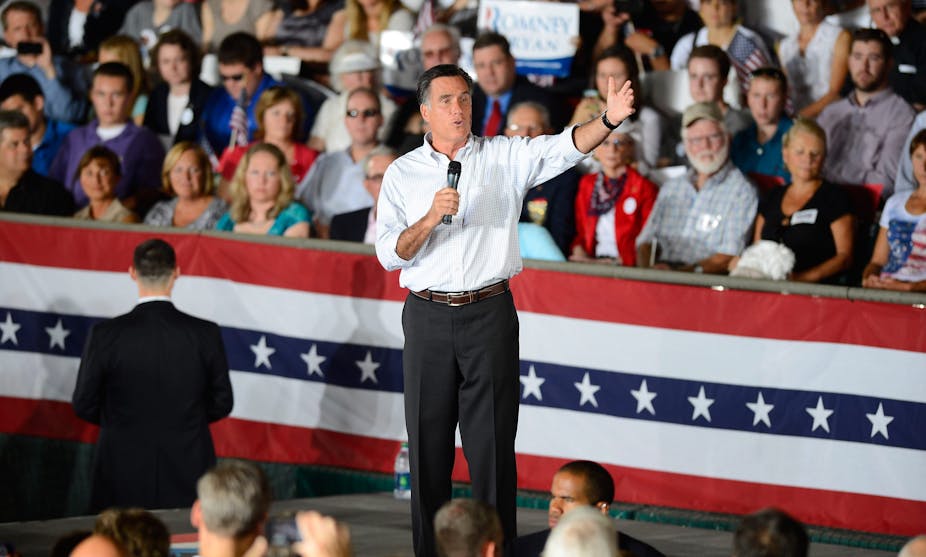Republican presidential nominee Mitt Romney’s comment that 47% of households pay no federal income tax is true. (It’s actually closer to 46%.) But when you dig beneath the bumper-sticker headline, his suggestion that half the country is comprised of Obama-supporting government dependants begins to unravel.
A Tax Policy Center report found that of this 46%, 15% pay no federal income taxes because they qualify for programs such as the earned income or family tax credit, 22% are elderly Americans without significant sources of income, and 50% don’t make enough money to qualify after factoring in deductions and exemptions.
We’ll start with the earned income tax credit (EITC). The EITC provides rebates to lower income earners, especially those with children. The concept can be traced back to the conservative economist Milton Friedman and it has been championed by those on both ends of the political spectrum.
The bipartisan 1986 Reagan tax reform introduced the EITC and it was expanded by the subsequent Bush tax cuts. These reforms did greatly reduce the number of Americans paying federal income taxes, but they’ve also been extremely effective in moving lower-income Americans off of welfare and into the workforce. A Center for Budget and Policy Priorities study concluded that “these refundable credits lift more children out of poverty than any other program or category of programs at any level of government”.
Let’s move on to older Americans. That fact that the elderly comprises nearly a quarter of this supposedly irresponsible “46%” reveals the deceptiveness in Romney’s claim. Including retirees in these figures is an easy way to pad the statistics and perpetuate an image of government dependency.
It also undermines Romney’s depiction of the “47% of people who will vote for the president no matter what”. In the 2008 election, Obama won the popular vote by a 53-45 margin. However, McCain had the same 53-45 edge amongst voters 65 or older. If Romney’s going to write off this segment of the electorate, he may as well just drop out of the race now.
So what about that last 50%? A convenient feature of this right-wing meme is that it’s easy to equate not paying federal income taxes with not paying any taxes whatsoever. Of course, these people are not exempt from payroll taxes, state income taxes, sales taxes, or any of the various other means that state and local governments use to collect revenue.
And these other forms of taxes are generally much less progressive. Over 82% of households paid payroll taxes last year, and lower-income earners tend to pay at a higher rate than those in higher-income brackets. A report from the Center on Budget and Policy Priorities determined that “taxpayers in the bottom 20% of the income scale paid an average of 8.8% of their incomes in payroll taxes in 2007, compared to 1.6% of income for those in the top 1% of the income distribution”.
The likelihood of someone paying income taxes is also closely correlated with age. The stats Romney references refer to all Americans who can no longer be claimed as dependents. This means younger Americans who are still in university or are just moving into the workforce are included. Well less than 50% of citizens in their early twenties are paying income taxes, but amongst those in their early fifties it’s nearly 80%.
Romney’s framing of the issue casts an image of a perpetual underclass of moochers. It might rile up a room-full of wealthy donors, but it’s not sound economics. Forty-seven per cent of the electorate isn’t automatically voting for Obama. But, if he’s not careful, Mitt’s misguided statement could become a self-fulfilling prophecy.

